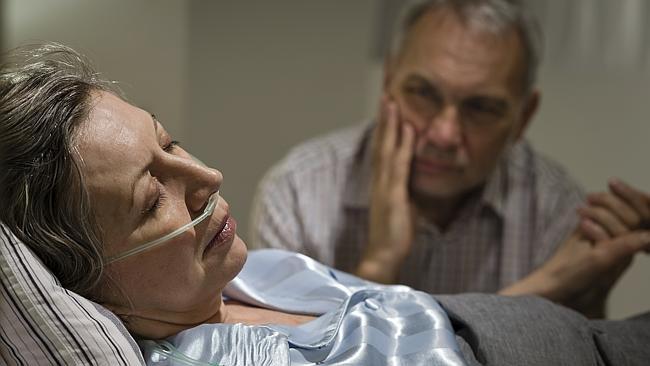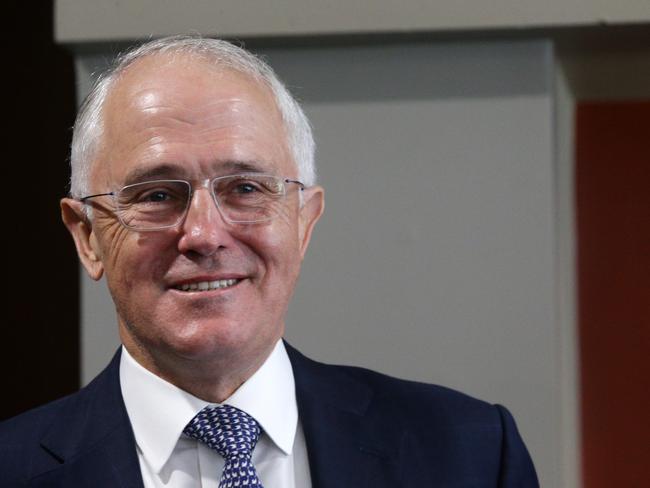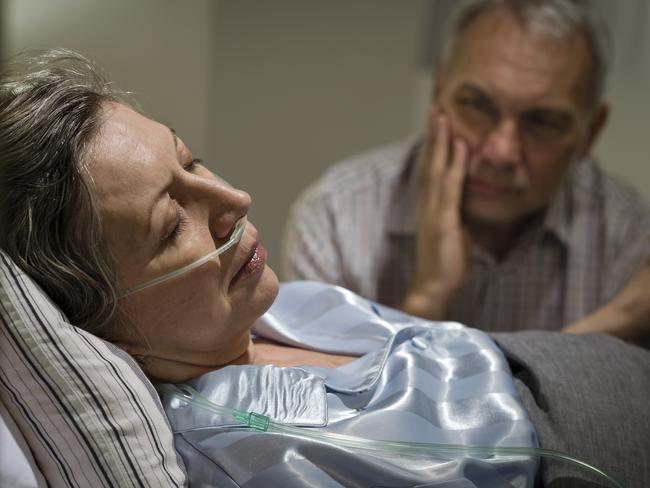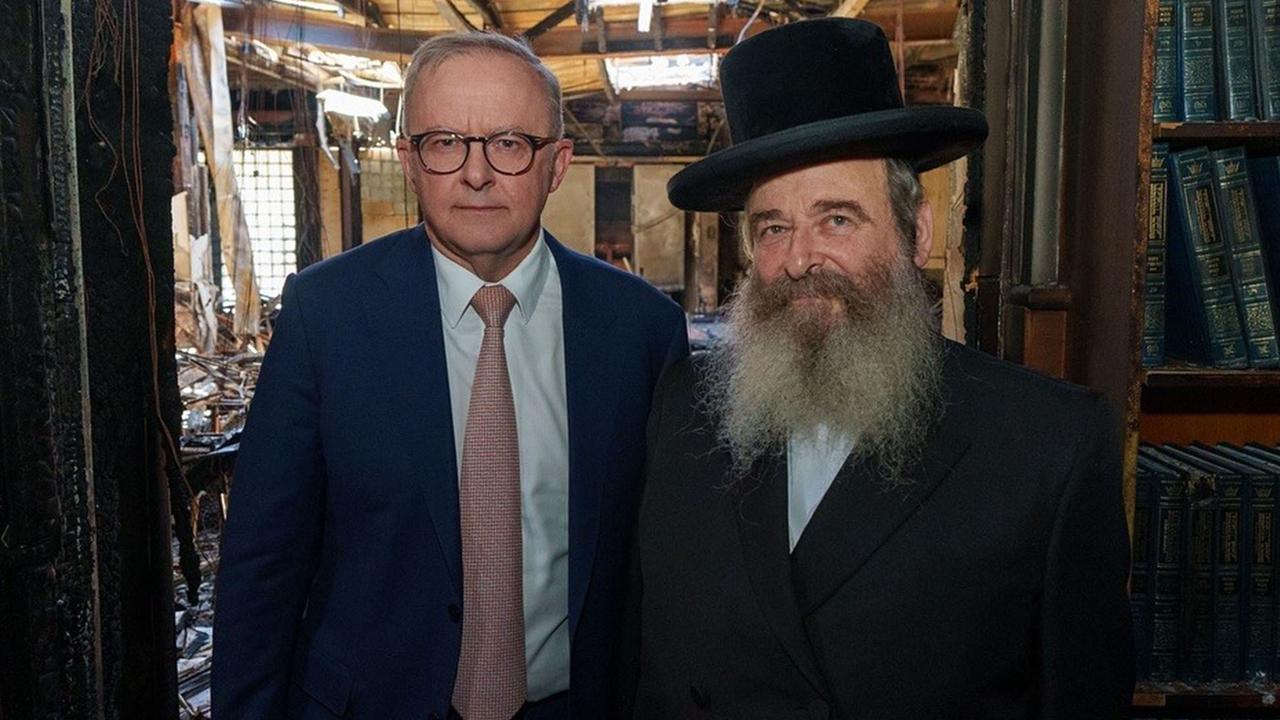Health care funding crisis looms as Australia’s greatest challenge
HEALTH care is hungry. Its costs are growing at four times inflation and if not reined-in, every last cent of state budgets will be spent on health.

National
Don't miss out on the headlines from National. Followed categories will be added to My News.
IMAGINE a future where every cent of the state budget was spent treating sick people in public hospitals with no money left for roads or schools.
That was the dire prediction of some premiers before the states wrangled a $16.4 billion hospital funding deal from the Rudd-Gillard Labor government.
Hospital spending has been growing at two and a half times the inflation rate, it’s outstripping population growth and is rising even faster than the ageing of the population.
If nothing was done NSW had predicted its entire state budget would be spent on healthcare alone by 2033.
Put simply our health spending was growing so fast we were not raising enough taxes to fund it.
To cope with the problem the Rudd Gillard government signed an agreement with the states in 2010 in which it committed to funding 50 per cent of the efficient growth in hospital services.
That deal was scrapped by former Prime Minister Tony Abbott in his first budget.
This is why Prime Minister Malcolm Turnbull faced a showdown with state premiers over health funding on Friday.
LATEST: hospital funding agreement reached at COAG
LATEST: plan revealed to revolutionise healthcare
HEALTH COST TSUNAMI

The states are facing a $57 billion health funding hole in the coming decade.
That means longer waiting lists for elective surgery and longer waiting times for hospital emergency care.
Queensland has estimated its $11.8 billion spending cut was equivalent to cutting 818 doctors, 2,895 nurses; and 824 health practitioners.
Victoria estimated it would lose funding for 2.9 million elective surgeries or nearly 32 million dialysis sessions.
In NSW it was estimated by 2050, the Commonwealth’s contribution to the NSW budget will have halved from 26 per cent to 13 per cent, representing a loss of $16 billion a year.
Health Care Homes will help people like Michael who have a complex illness. https://t.co/OHAX0uUmRE pic.twitter.com/haWIbPIMEb
— Malcolm Turnbull (@TurnbullMalcolm) March 31, 2016
Department of Premier and Cabinet principal policy officer Sean O’Shannassy said in an email obtained under FOI the cuts would result in increased waiting times for treatment that would hit low income earners the hardest.
Malcolm Turnbull’s radical solution was to offer the states an extra $5 billion funding in the next four years and then argue they impose their own income tax to pay for health services from 2020.
The states provide the services, they should raise the money to pay for them, he said.
It’s a plan that was rejected by key states and it was seized on by the Opposition eager to use it as an election scare campaign warning people would end up being taxed more.
But the causes of this health funding crisis are complex.
LIVING LONGER, ILLER

In the 30 years since Medicare was introduced the life expectancy of Australians has increased by more than 10 years.
Yes we’re living longer but we’re living with chronic and complex health problems that cost our health system a lot to manage.
Nearly 40 per cent of the over 65s now have a disability and one in three of us has a chronic illness.
Ten per cent of the population with severe chronic illnesses account for a staggering 45 per cent of Medicare spending.
Medical breakthroughs mean we can now keep people with cancer and heart disease alive a lot longer and we can treat diseases that previously would have killed people.
But this innovation is costly.
In the last three years the government has funded more than $2.7 billion worth of new drugs including a $500,000 per patient per year treatment for a rare immune disease and a $300,000 per year drug for cystic fibrosis and new treatments for hepatitis C that will cost $1 billion in total.
Most breakthrough cancer medicines now cost around $100,000 per patient per year and there are 225 of these set to enter the market in the next five years.
We’re spending $44.4 million a year on more than 5.7 million admissions to public hospitals each year and those admissions are growing at a rate of three per cent a year.
In total state and federal governments are spending $104 billion on health care, health funds and individuals provide another $50 billion worth of health funding.
WHEN ENOUGH IS ENOUGH

The answer to the problems presented by this spiralling health spending cannot be simply raising more taxes.
Experts says a four pronged approach that cuts waste, rewards efficiency, manages chronic illness better and tackles prevention is needed.
We need to put more emphasis on preventing illness by tackling diet and exercise, smoking and alcohol consumption. However, the current government has given prevention short shrift, it scrapped the national preventive health agency.
We need to make the health system more efficient. Former Health Department chief and Grattan Institute researcher Professor Stephen Duckett has found the cost of the same surgery can vary by as much as $16,000 depending on which public hospital it takes place in.
He says we could save $1 billion a year simply by making all hospitals perform at the most efficient level.
Simple reforms can reduce the burden on Australian hospitals, and make patients healthier for longer. 3/3 https://t.co/HLsjQe8UnL
— Grattan Institute (@GrattanInst) March 6, 2016
Malcolm Turnbull has gone some way to addressing this by overturning Tony Abbott’s decision to scrap activity based funding which sees hospitals paid only the most efficient price for the work they do. Malcolm Turnbull’s new funding deal with the states plans to pay states only the efficient price of hospital treatment.
When people have a chronic illness it needs to be managed with best practice, evidence-based guidelines to keep people out of hospital.
Mr Turnbull has addressed this need announcing this week a new chronic care program that will see up to seven million Australians with arthritis, cancer, diabetes and other chronic illnesses enrol with a single medical practice that will be paid to manage their illness.
However, the trial program provides only $308 per patient per year so it is hard to see how this will have much impact and it steals this money from hospital funding that previously went to the states.
Lastly, we do need to find extra revenue.
BOTTOM OF THE BARREL

Mr Turnbull offered the states around $5 billion in extra hospital funding in the four years to 2020. This will plug two thirds of the $7.8 billion federal funding hole the states are facing in the next four years.
Under Labor’s hospital funding deal the federal government would have paid for 50 per cent of the efficient growth in hospital services, the Turnbull deal offers only 45 per cent.
The Turnbull Government has also capped the growth funding it will provide for hospitals at six per cent, Labor’s plan was uncapped.
And from 2020 the Prime Minister says the states should levy their own income taxes to pay for any extra hospital funding they need.
There are other ways to raise money and some premiers have floated the idea of increasing the 2 per cent Medicare levy.
The beauty of raising this levy, as opposed to the GST, is you don’t need to find compensation for low income earners because they are exempt from paying the levy.
Despite the predictions of health consuming entire state budgets, spending in the area does appear to be coming under control.
The Australian Institute of Health and Welfare reports there was a small decline in per person health expenditure in 2012—13 ( – 0.6 per cent) followed by a small increase in 2013—14 (1.4 per cent).
“The last time similar low growth in expenditure occurred was in the early 1990s,” it notes.
The NSW Government has successfully kept the proportion of the budget spent on health at a consistent 27 per cent — 28 per cent over the last decade.
There is still much more to do to bring health spending under control.
The government is currently working on major reforms of private health insurance in an effort to bring costs under control in the private sector.
Taxpayers fund around 27 per cent of health insurance rebates through the tax rebate on private health cover so savings here could benefit taxpayers.
EMAIL: sue.dunlevy@news.com.au
TWITTER: @Sue_Dunlevy


